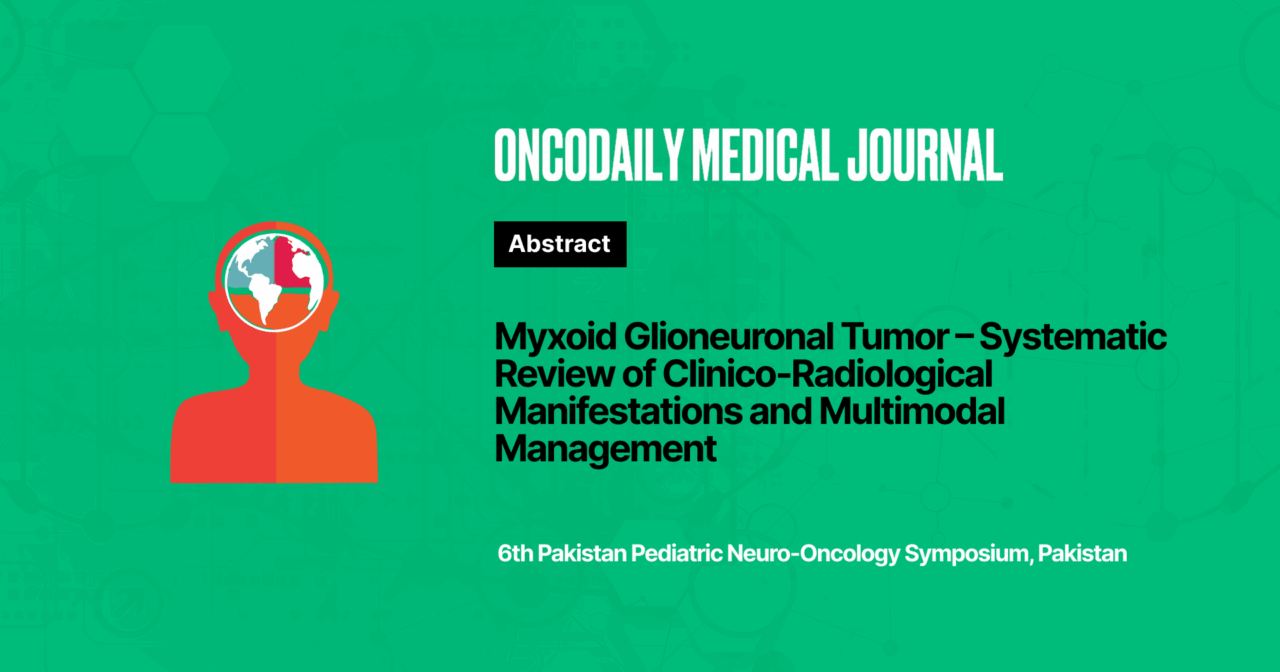Myxoid Glioneuronal Tumor – Systematic Review of Clinico-Radiological Manifestations and Multimodal Management
Abstract
Introduction: Glioneuronal tumors (GNTs) are rare CNS neoplasms, with recent literature highlighting variants like dysembryoplastic neuroepithelial tumor (DNET), multinodular and vacuolating neuronal tumor (MVNT), and myxoid glioneuronal tumors (MGNT). MGNTs are increasingly reported, yet their biological behavior remains unclear. This study systematically reviewed their clinicoradiological features and explored current strategies for multimodal management.
Methodology: A comprehensive literature search was conducted using PubMed and Google Scholar, adhering to the Preferred Reporting Items for Systematic Reviews and Meta-Analyses (PRSIMA) guidelines, spanning the time period from 2018 to 2025, which yielded 17 articles. Descriptive analysis with measures of central tendency and central dispersion was utilized to analyze the variables.
Results: A total of 37 patients were included, comprising 45.94% (n=17) pediatric cases (mean age: 7.19 ± 3.55 years) and 54.06% (n=20) adults (mean age: 30.95 ± 13.80 years), with unequivocal gender distribution. Headache in 43.2% (16) and seizures in 32.4% (12) were the most common presenting symptoms. MRI typically revealed solitary, non-enhancing lesions in 91.9%(34) without cortical involvement, hypointense on T1, hyperintense on T2/FLAIR, and showing facilitated diffusion on ADC. Most lesions, 81.08%(30), were supratentorial, commonly arising from the Lateral ventricle and septum pellucidum.
Excisional biopsy was performed in 77%(28), with gross total resection in 64.3% (24), leading to symptom resolution in 93.8% (34) over a mean follow-up of 28.8 months. Histopathology showed oligodendroglial cells in a myxoid matrix in 67.57% (25), GFAP positive, and PDGFRA p.K385 mutations in 81.08% (30). Adjuvant therapy had limited efficacy.
Conclusion: Myxoid Glioneuronal tumor, PDGFRA p.K385 mutant is a distinct rare variant of GNTs. These tumors commonly affect children and adolescents, presenting with headaches and seizures. Characteristic MRI finding shows no cortical involvement, while others do and are non-enhancing lesions with typical signal characteristics. Excisional biopsy remains the definitive treatment for achieving complete excision with excellent long-term outcomes.
Conflict of Interest: None
Funding: None
Disclosure statement: This abstract represents preliminary findings from a systematic review that is currently in progress. The current author list includes contributors up to the data collection and initial analysis phase. Additional authors will be added to the final manuscript based on substantial contributions to the interpretation, discussion, and drafting of the full article. The completed manuscript is still under development.
License: This article is published under the terms of the Creative Commons Attribution 4.0 International License (CC BY 4.0).
© Nasruddin Ansari, 2025. This license permits unrestricted use, distribution, and reproduction in any medium, provided the original author and source are credited.





